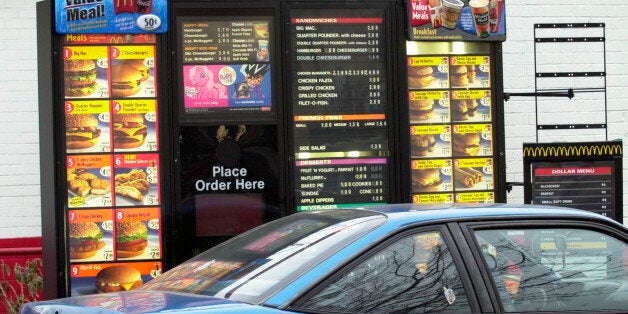
For many Americans, ringing in the New Year means new resolutions to lose weight and exercise more. However, many more people are now opting to eat in restaurants rather than cooking at home and that can be very challenging to cutting calories. But for the waistline watchers among us, eating out without overeating will soon become easier. Later this year, long-awaited regulations from the Food and Drug Administration (FDA) will go into effect requiring chain restaurants and other establishments to clearly display calorie information beside all food items on their menus.
Recently, a lot of the discussion has revolved around the cost of "lost pleasure" when consumers opt for a lower-calorie item. However, that cost is but one paragraph in over 75 pages of cost-benefit analysis. Perhaps a closer look at the "gained pleasure" of lower heart disease and decreased diabetes is warranted.
What we find most interesting, though, is FDA's ability to engage with the full breadth of both costs and savings, a difficult but important task when it comes to a variety of health-promoting strategies, including menu labeling. And the ultimate finding of their in-depth analysis is that menu labeling will provide a net benefit of more than $500 million per year.
This benefit is based on the increase in information that consumers will have once calories are actually listed next to food items. And while not the panacea for obesity, FDA's analysis acknowledges that calorie counts on menus influence many people's choices and can even result in restaurants changing recipes to avoid the sticker shock of high-calorie entrees.
But it won't just be restaurants posting calories; popcorn, nachos, and other prepared snacks at movie theaters, prepared foods from grocery and convenience stores, and baked goods at coffee shops will all be labeled. This broad availability of calorie information was in FDA's original proposal in 2011, and in 2013 we urged FDA not to give in to pressure from cinema and grocery chains that wanted exemptions. We argued that Americans deserved easy access to calorie information no matter where they were making food choices, and we applaud FDA for sticking with the original scope. We also believe that requiring menus to be labeled across a wide variety of vendor types is a more equitable approach than picking and choosing which sectors get exemptions and which do not.
Readily available calorie information is crucial for consumers to be able to make informed food choices throughout the day as they get their food from a variety of venues. Our nation is facing rising rates of obesity and chronic disease that continue to push health care spending higher. We already know that healthy eating and physical activity can help prevent and even reverse these problems and increasing consumer knowledge about the calories they are consuming is a necessary step in the right direction. These are just some of the reasons that we supported menu labeling in our 2012 report, Lots to Lose: How America's Health and Obesity Crisis Threatens our Economic Future.
Though menu labeling hasn't come without some controversy, we applaud FDA for ensuring that calorie information is widely available to Americans regardless of whether they are shopping at the grocery store, eating at fast-food or sit-down restaurants, or grabbing a snack at the movies. This is not only equitable for all food-related businesses, but the best outcome for the "gained pleasure" of all consumers.
______________________Dan Glickman served as U.S. Secretary of Agriculture from 1995 until 2001 and as Chairman and CEO of the Motion Picture Association from 2004 until 2010. Ann M. Veneman served as U.S. Secretary of Agriculture from 2001 until 2005 and as Executive Director of UNICEF from 2005 until 2010. Together they co-chair the Bipartisan Policy Center's Prevention Initiative.